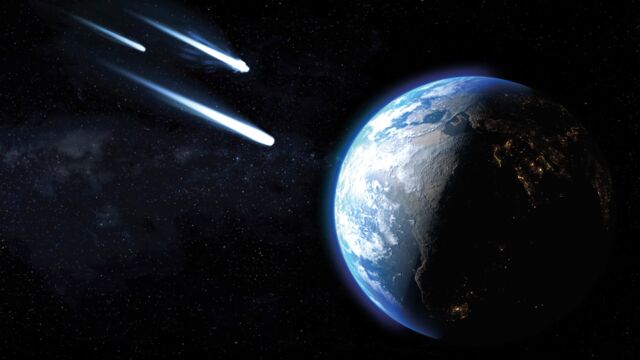There are a number of celestial phenomena that can be witnessed with a pair of binoculars, a simple telescope, or even by the naked eye. Be it comets, eclipses, supernovas or even meteor showers, the following astronomical events will occur in our lifetime.
Discover our latest podcast
The longest solar eclipse - August 2nd, 2027
A solar eclipse is when the Moon passes between the Sun and the Earth, causing it to fully or partially block out the sun. Although solar eclipses can usually be seen on Earth every year, on August 2nd 2027 the second-longest solar eclipse of the century will occur. It will have a maximum duration of 6 minutes and 23 seconds. The longest solar eclipse of our century will occur on July 16th 2186, so barring some impressive technological advancements, we won’t be around to see it.
Asteroid Apophis near-earth flyby - April 13th, 2029
Apophis, also known by its full name 99942 Apophis, is an asteroid the size of three and a half football fields that will pass between the Moon and Earth on April 13, 2029. When first discovered in 2004, astronomers calculated that there was a 27 percent chance that the asteroid would make impact with the earth. Luckily, further analysis by NASA has shown that 99942 Apophis will miss Earth by 31,300 kilometres, but will still be the closest flyby by an asteroid in history.
Leonid Meteor Shower - November 2031
Earth moves through the meteor stream of particles left from the passages of comets, otherwise known as meteor showers. The Leonid meteor shower is when the Earth specifically passes through the orbit of the Tempel-Tuttle comet. Leonid meteor showers occur every 33 years, producing as much as 100,000 meteors an hour. The next major occurrence will be in November 2031.
Halley’s Comet - Mid-2061 to 2062
Named after astronomer Edmond Halley, who successfully calculated its orbit, this short-period comet is visible from earth with the naked eye every 75-76 years. Since the last time, it was observed was in 1986, some people will have the opportunity to see it twice!
A Supernova Explosion - The Next 50 Years
Astronomers believe that a supernova occurs when the core of a dying star collapses. This collapse generates an explosion that ejects the matter from the outer part of the star, leaving a black hole. The last supernova was spotted three decades ago outside of our galaxy, it blazed with the power of 100 million suns and was one of the brightest exploding stars in 400 years. According to Ohio State University astronomers, the next supernova will occur in our galaxy in the next 50 years. There is a 20% chance it will be visible by the naked eye, otherwise a telescope would be necessary.















